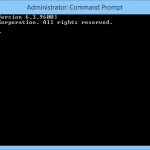Accurate time is one of the most important aspects to keeping a computer network secure and safe. Places such as stock exchanges, banks and air traffic control rely on secure and accurate time. As computers rely on time as their only reference for when events happen, a slight error in a time code could lead to all sorts of errors, from millions being wiped off share prices to aeroplane flight paths being incorrect.
And time doesn’t just need to be accurate for these organizations, but secure too. A malicious user who interferes with a timestamp could cause all sorts of trouble, so ensuring time sources are both secure and accurate is vital.
Security is increasingly important for all sorts of organisations. With so much trade and communication conducted over the internet, using a source of accurate and secure time is as important a part of network security as anti-virus and firewall protection.
Despite the need for accuracy and security, many computer networks still rely on online time servers. Internet sources of time are not only unreliable, with inaccuracies commonplace, and distance and latency affecting the precision, but an Internet time server is also unsecure and able to be hijacked by malicious users.
But an accurate, reliable and completely secure source of time is available everywhere, 365 days a year—GPS.
While commonly thought of as a means of navigation, GPS actually provides an atomic clock time code, direct from the satellite signals. It is this time code that navigation systems use for calculating position but it is just as effective to provide a secure time stamp for a computer network.
Organizations that rely on accurate time for safety and security all use GPS, as it is a continuous signal, that never goes down, is always accurate and can’t be interfered with by third parties.
To utilise GPS as a source of time, all that is required is a GPS time server. Using an antenna, the time server receives the GPS signal, while NTP (Network Time Protocol) distributes it around the network.
 With a GPS time server, a computer network is able to maintain accuracy to within a few milliseconds of the atomic clock time signal, which is translated into UTC time (Coordinated Universal Time) thanks to NTP, ensuring the network is running the same accurate time as other networks also synchronised to a UTC time source.
With a GPS time server, a computer network is able to maintain accuracy to within a few milliseconds of the atomic clock time signal, which is translated into UTC time (Coordinated Universal Time) thanks to NTP, ensuring the network is running the same accurate time as other networks also synchronised to a UTC time source.

 With a
With a 

